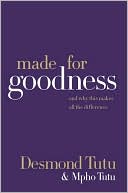Contraceptive Choice, Fertility, and Public Policy in Zimbabwe, Vol. 109
The determinants of contraceptive use in Zimbabwe are examined using individual-level survey data in conjunction with two special community surveys. The spotlight is focused on the role of the availability and quality of community health and family planning services. The impact of the household resources and individual characteristics, in particular education and measures of income, are also taken into consideration. In order to evaluate the distributional impact of investments in health...
Search in google:
The determinants of contraceptive use in Zimbabwe are examined using individual-level survey data in conjunction with two special community surveys. The spotlight is focused on the role of the availability and quality of community health and family planning services. The impact of the household resources and individual characteristics, in particular education and measures of income, are also taken into consideration. In order to evaluate the distributional impact of investments in health programs, special attention is paid to differences in the effects of the programs across educational groups. The study proceeds to investigate the determinants of fertility outcomes and then turns to the impact of contraceptive use on fertility, taking account of the fact that both reflect, at least in part, the outcome of choices by couples. The results indicate that the availability and quality of family planning and health services in the community are associated with higher rates of adoption of modern contraceptives. Public health policy has sought to bring community-based distributors to all communities in Zimbabwe; this is likely to be associated with increased adoption of modern methods. Mobile family planning clinics seem to have an even more powerful impact on adoption as does the presence of a general hospital in the area; the impact of these two investments in infrastructure is larger among women with little education. Higher fertility women are more likely to use modern contraceptive methods. However, after taking account of unobserved heterogeneity, there is no relationship between the use of modern methods and fertility, except among very young women for whom higher contraceptive use isassociated with higher fertility. This suggests, perhaps, that these young women wish to demonstrate their fecundity before adopting modern methods or are being targeted for contraceptives after the birth of their first child.








